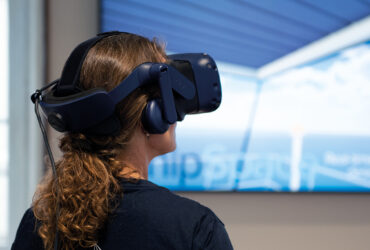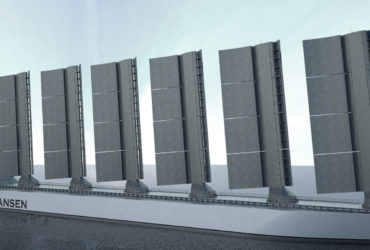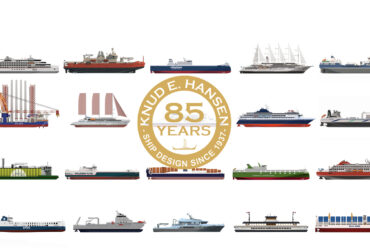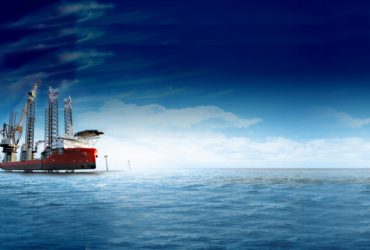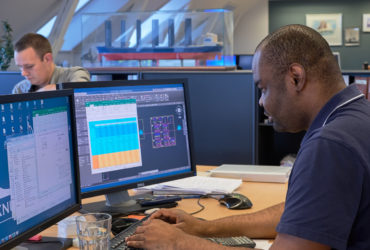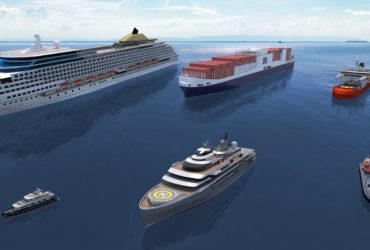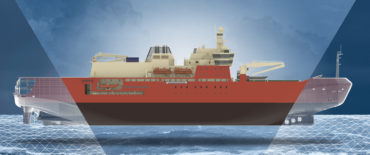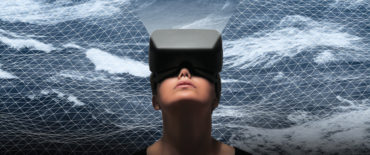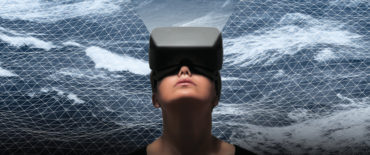Experience with Virtual Reality Aided Design and Engineering
Engineers and designers at KNUD E. HANSEN Naval Architects have been exploring and developing in VR with the use of ShipSpace™system since 2016. “Feedback from our customers has been tremendously positive about the use of VR for ship design”, says Ken Goh, who is a senior mechanical engineer in the company and an advocate for the technology from the outset. “Drawing reviews are still necessary, but we get much more thorough and richer feedback when it comes to reviewing working spaces and accessibility issues. People are astounded by how realistic VR is. How they can move and see in a very natural way. They are able to use the VR tools in just a few minutes. Even reluctant users are comfortable and being productive in less than half an hour.”
Goh notes that many early adopters have been put off using VR because of poor implementation and performance issues. “Earlier VR theatres and caves cannot really be considered as true VR since they have many display inaccuracies due to the projection limitations, people often get motion nausea after 10-15 minutes as they are flown around by another person. With ShipSpace™ and the Head Mounted Display (HMD), the view is 100 percent accurate. “You are fully in control of what you see and how you move around the space. You also always feel secure because you’re always standing on something.”
Regardless of the benefits of HMDs over earlier VR systems, poor user interfaces and inadequate graphics performance with stuttering and laggy image display, will still lead to a poor VR experience. Goh says “Without the correct computer hardware and software the VR experience can be unconvincing, uncomfortable and can quickly cause disorientation, nausea and headaches for the user. These are problems that ShipSpace has been specifically designed to overcome. “We regularly have had people using ShipSpace for hours without any motion nausea issues.”
Since the majority of design work undertaken by the company is in the initial design phases of a vessel project, the challenge has been to find more efficient methods and processes to enable the 3D digital models required for VR to be used earlier in the design process. In commercial ship design, typically there only a few thousand hours to develop the initial concept design including studies, arrangements, calculations and specifications. This in contrast to the detail design phase where many hundreds of thousands of hours can be spent on the 3D models required for the shipyards’ production processes. It is worth noting that 75-90% of the ship’s acquisition cost is committed in the initial design phase despite only 1-2% of the ship budget being spent on the concept design.
Every design still needs to start with a 2D general arrangement drawing, specifications and initial calculations. The hull is then modelled in 3D so that the vessel stability and hydrostatics can be assessed. The hull lines can then be adjusted for buoyancy and weight moments and then used for CFD modelling to refine resistance and powering estimates. From the stability model, the surface areas, centre of mass, and weight distribution for all the compartment bulkheads can be collated to refine the structural weight estimate. The superstructure is also simply modelled in 3D so that the entire vessel lightweight can be more accurately calculated. This is important since the structure accounts for 60-80% weight of an unloaded vessel depending on ship type.
These simple 3D models can then be checked with ShipSpace™VR tools to ensure all the vessel’s compartments, tanks and voids, especially those with highly irregular shapes, can be suitably manufactured and be accessible once built. Making changes to watertight compartments later in the design process can have large repercussions on the arrangement of the vessel. These early checks can significantly de-risk the vessel’s final design and make for a better designed vessel in which use of space has been highly optimised without effecting manufacturability or serviceability of the new vessel.
The simple 3D model can then be quickly brought to life by embellishing with external details, textures and colours. At the initial design stage, this model needs to be aesthetically accurate even though technical accuracy of details is low. For example, even though the lifeboat has been specified, the actual maker and model have not yet been chosen, so such details are more representative than necessarily accurate. External renders of this exhibition model give the customer an accurate visual impression of the vessel. Furthermore, the model can be explored at full scale with the ShipSpace™VR system to give the customer the most realistic experience of the new vessel possible and enables detailed feedback about the arrangement that is simply not possible from just looking at drawings or pictures.
Adding interior details to the model also enables the interior arrangement to be reviewed. The wheelhouse is always of high interest, since it allows visibility and sightlines to be checked with high accuracy and something not possible even with an expensive physical mock-up built inside a factory. For Ro-Ro vessels, drivers have been able check that they can negotiate ramps and pillars while trying to manoeuvre their trucks around crowed decks. Driver assess sightlines and two-way traffic can also be tested. Chefs have been checking cooking arrangements of galleys and scientists, the layout of their labs and equipment for sampling and sensor deployment.
Further down the design process, KNUD E. HANSEN has been working with clients to implement the ShipSpace™system to facilitate the review of the final detail design of blocks before they go to production. The system enables multiple users to meet together, similar to video conferencing, except that users are inside the 3D model. Participants can see and hear each other through avatars in a realistic way. It is akin to a site meeting on a virtual ship. This has proven to be an extremely powerful way to conduct design reviews, since people notice details that are easily missed when reviewing on a computer screen. This largely due to the natural way you view the model with a much larger Field-Of-View (FOV) and stereoscopic vision only possible with an HMD.
If there is an issue with the design, participants can quickly discuss the issue, make measurements, add 3D mark-ups to the model, take photos and voice memos to instruct design corrections. You can even spawn objects to illustrate required changes or pose mannequins to highlight human factor issues. ShipSpace™virtual meetings enables reviews to be conducted by participants across different sites, making the review process much faster, and allowing more experts and stakeholders to contribute to the design. The system can also be used by production personnel who would like to familiarise themselves with the design and plan installation sequencing with other labour trades so that people are not getting in each other’s way or causing rework issues.
The company has also assisted in redesign of existing vessels using the ShipSpace™system, for example where a mooring deck has proven to be too congested and difficult to work in operation, or for retrofit of scrubbers in crowed funnels and casings. As the company gains more experience with working in virtual reality more opportunities for working smarter and more effectively are certain to arise. Goh says, “ShipSpace has been a game changer for us. At the start we only thought of it as a sales tool, but the use cases just seem to keep coming. VR has matured quickly from a fancy toy to a powerful collaboration system for creating better ships more efficiently.”
Article from The Naval Architect

